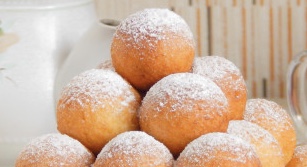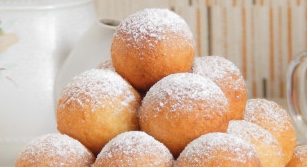



A new recipe for a simple and delicious dessert dish. Cooking fluffy, delicate and fragrant curd balls deep-fried in oil. These ruddy koloboks are especially good when warm, and if you sprinkle them with powdered sugar and serve with a glass of milk or a cup of tea, homemade ones will be delighted!
The recipe for curd balls includes simple and affordable products that, it seems to me, the hostesses always have in stock. I used wheat flour of the highest grade, but the first one will do too (in this case, the amount of flour may differ from the specified one). You can also choose cottage cheese of the fat content that you like best.

A new recipe for a simple and delicious dessert dish. Cooking fluffy, delicate and fragrant curd balls deep-fried in oil. These ruddy koloboks are especially good when warm, and if you sprinkle them with powdered sugar and serve with a glass of milk or a cup of tea, homemade ones will be delighted!
The recipe for curd balls includes simple and affordable products that, it seems to me, the hostesses always have in stock. I used wheat flour of the highest grade, but the first one will do too (in this case, the amount of flour may differ from the specified one). You can also choose cottage cheese of the fat content that you like best.
Sign up to receive email updates on new recipes.